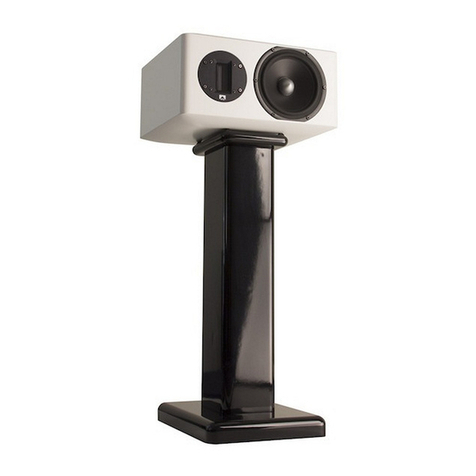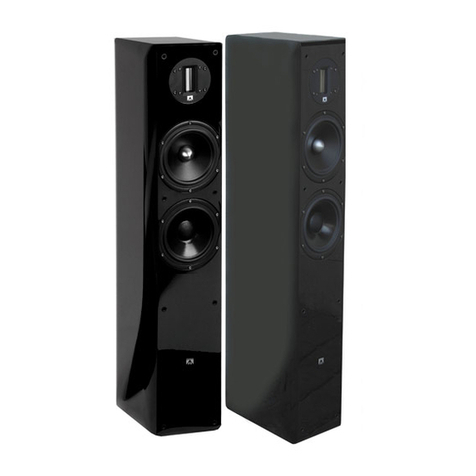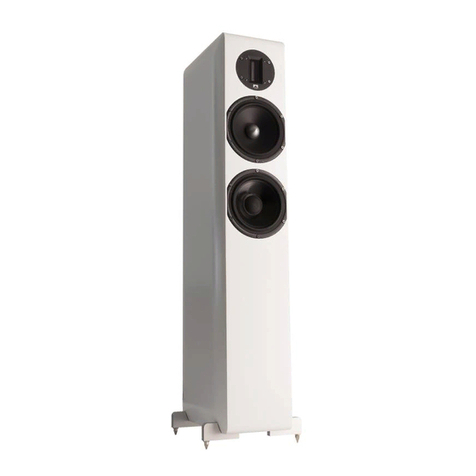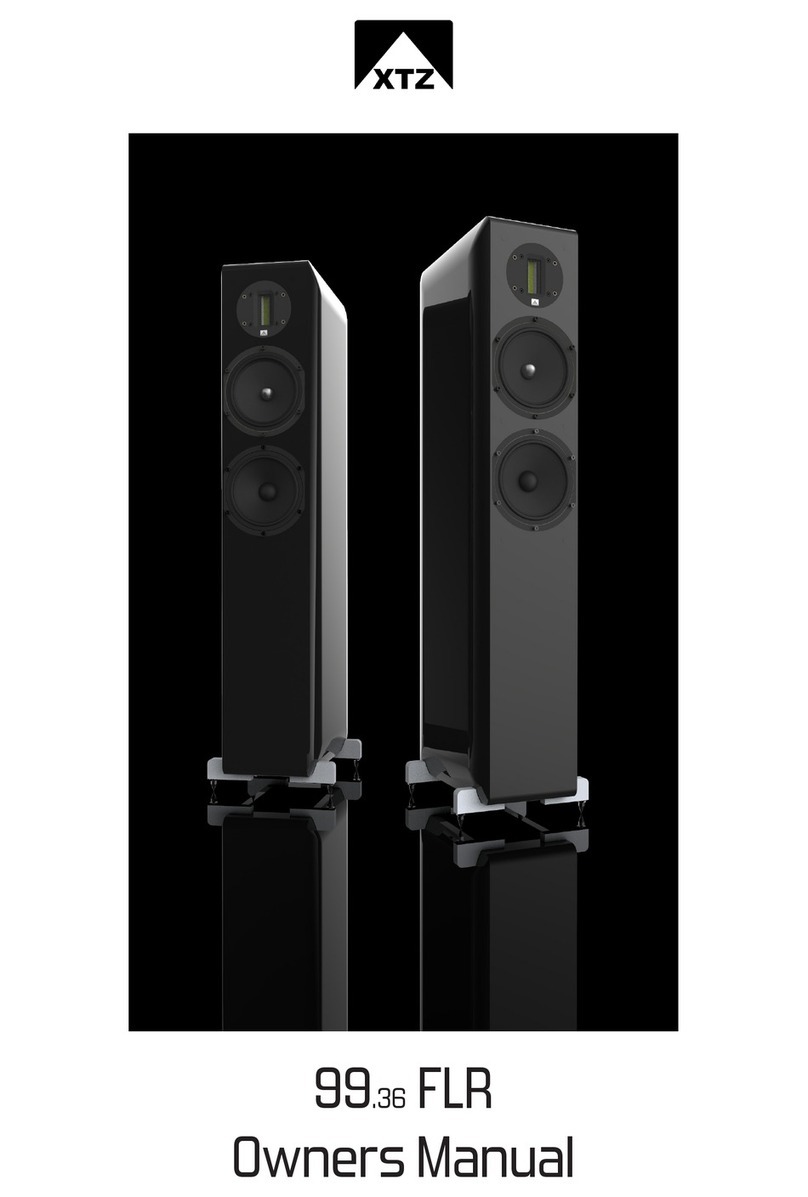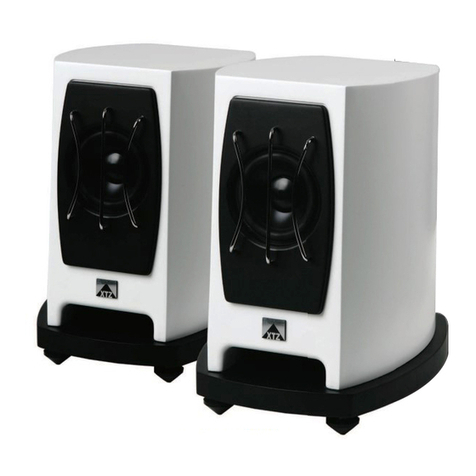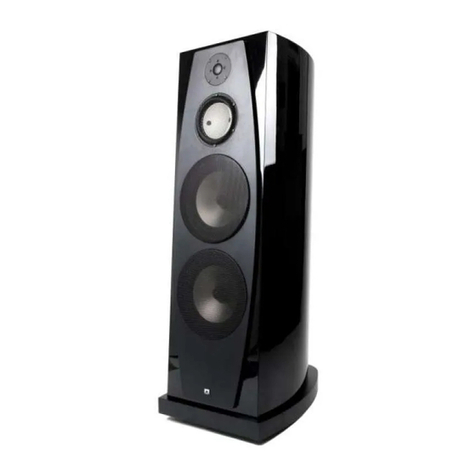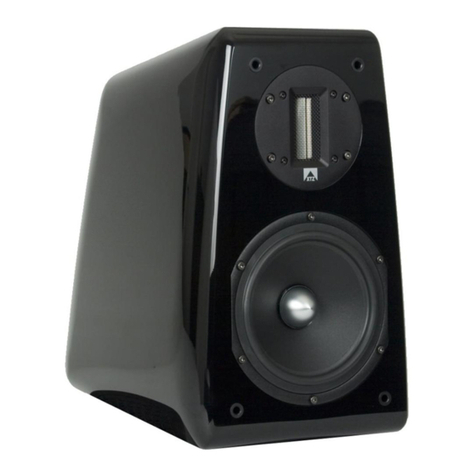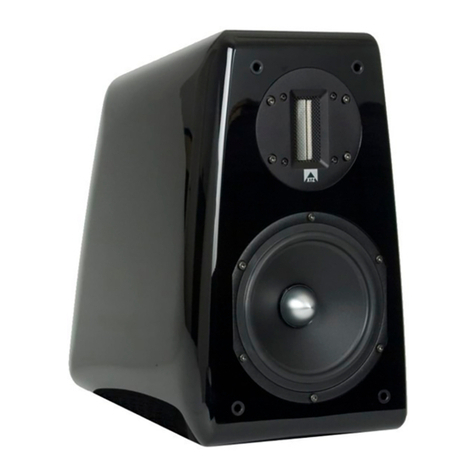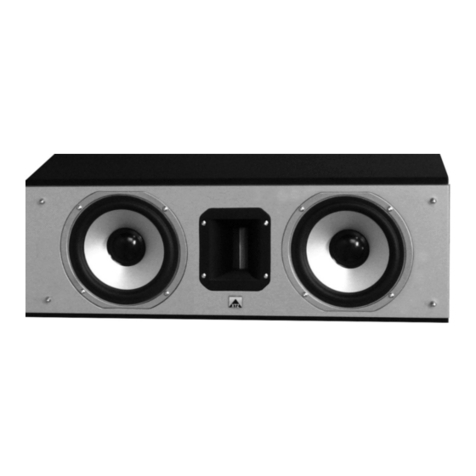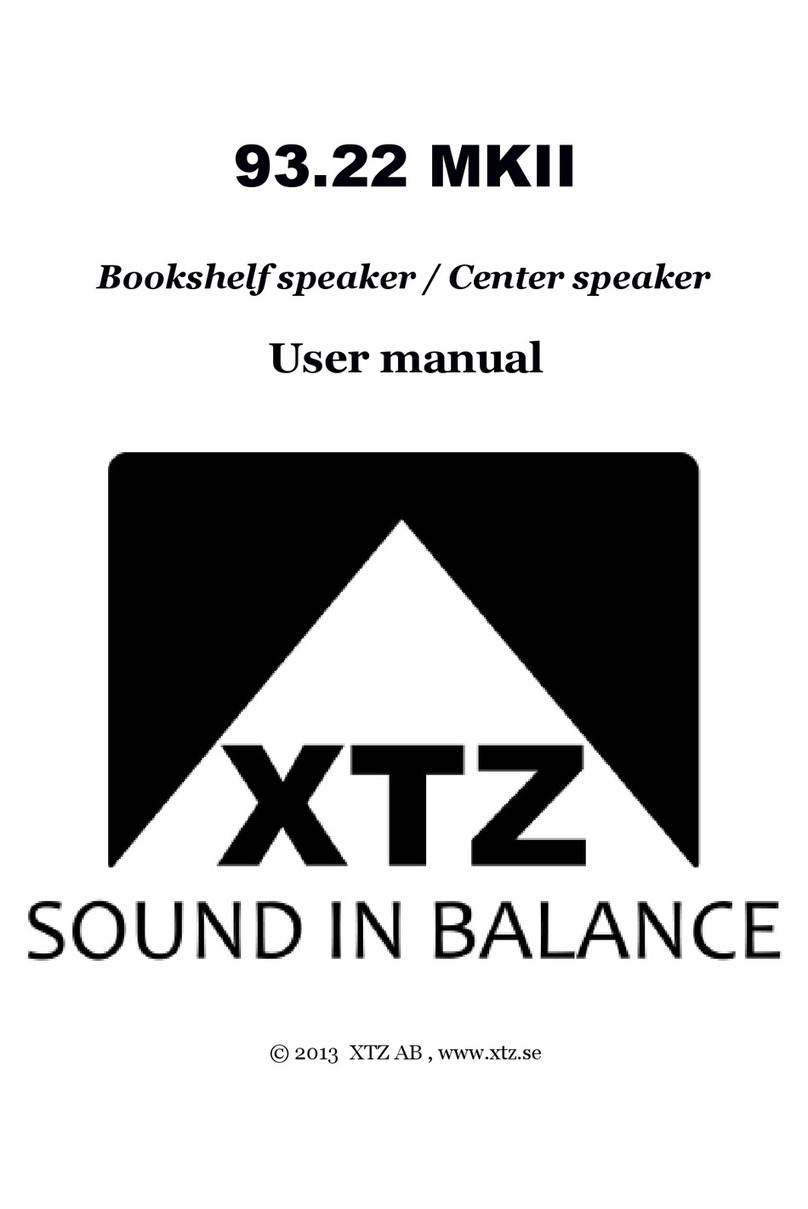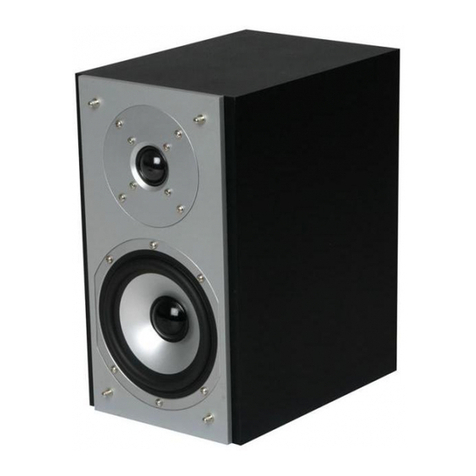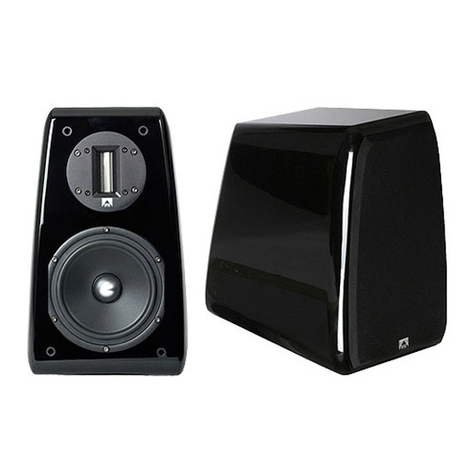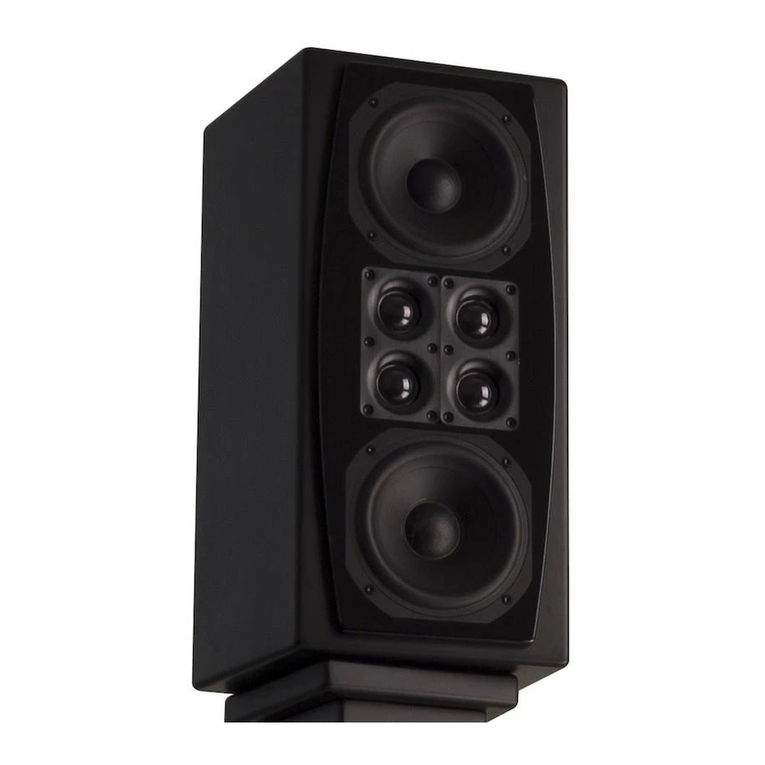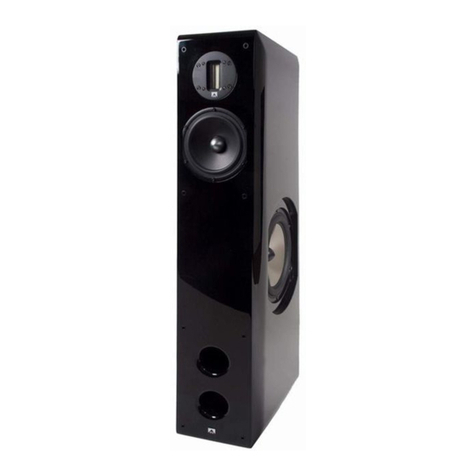The cabinet is a special design for a totally
optimized construction. Everything is optimized for
its reason and only the best solutions were chosen
to obtain the best possible construction for sound
reproduction.
The cabinet wall is built with strong MDF board. A
convex wall construction is much stronger than a
normal flat one. This means that the convex walls
can be thinner without loosing strength. Still, the
walls are 25 mm thick. The internal modes are
reduced a great deal if the walls are not flat and
parallel. The result is an extremely silent
construction with no inner resonances. The front
baffle is a 45 mm dual layer MDF construction.
The top and bottom of the speaker is made from 25
mm massive MDF. The cabinet has a total of 3
internal bars for the best performance.
Finally the back of the speaker is similar to the
front with two layer of MDF and reach a 65 mm
thick MDF.
The three internal bars reduce the inner resonances
and break up the standing waves inside the cabinet.
The cabinet is well damped and absorbing
materials are completely optimized. We put a lot of
effort into obtaining the best mix of natural and
synthetic wool to optimize resonance reduction.
We have chosen an ultra fast ceramic tweeter,
made for reproducing crystal clear sound, even at a
high SPL levels without any distortion.
The tweeter is produced by the German company
Visaton, and is an absolute reference class unit.
It is shielded, with an internally damped cavity and
a ventilated voice coil. The tweeter offers an
extremely flat frequency response and low
distortion.
